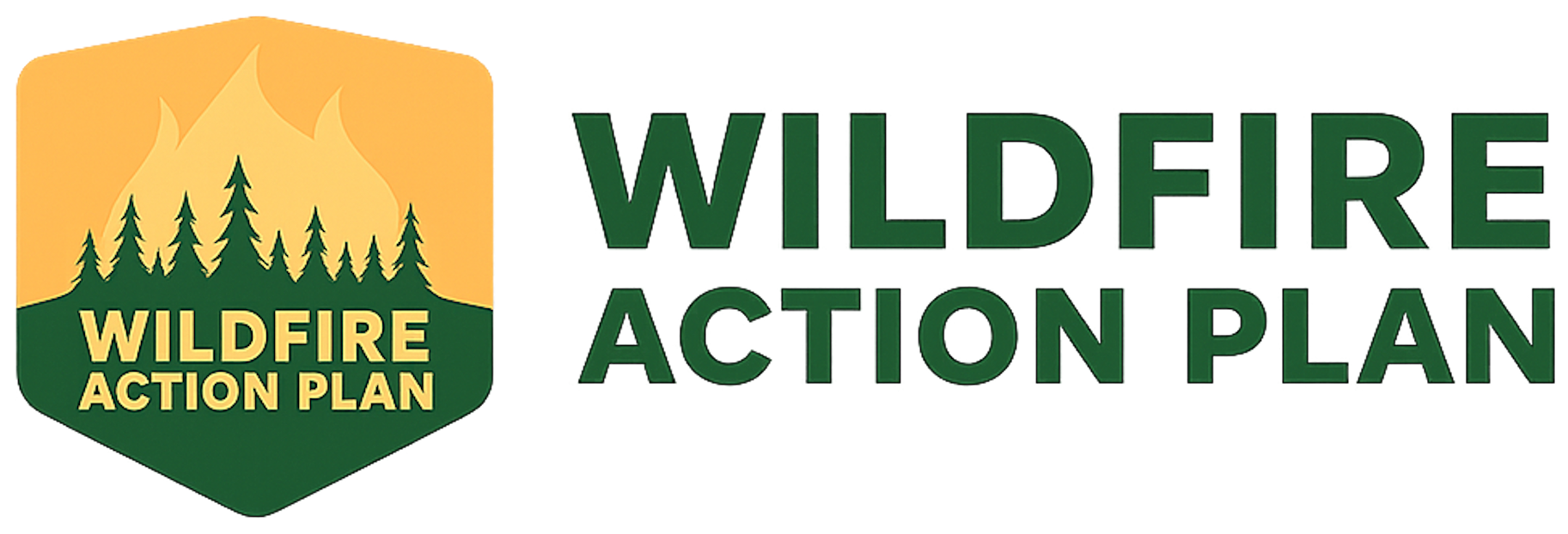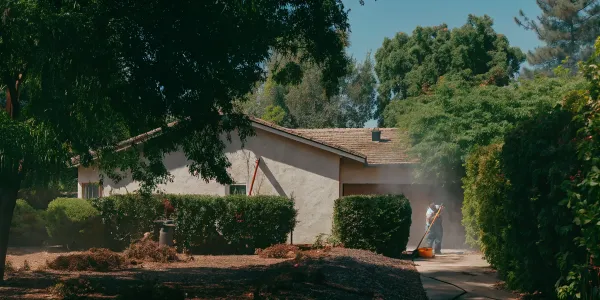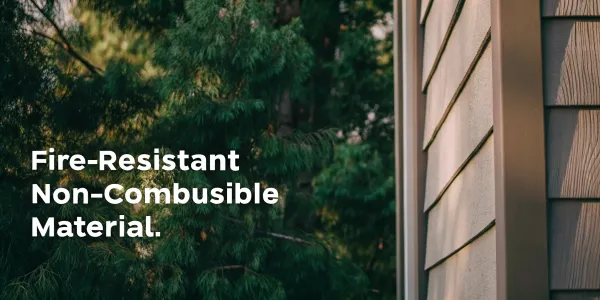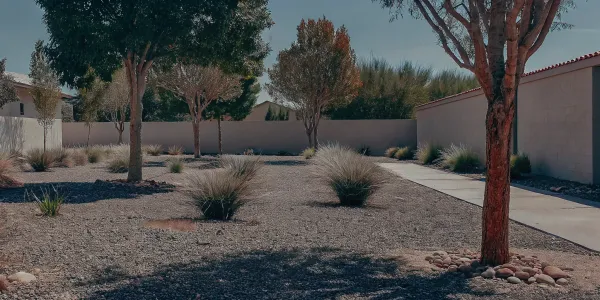What Does Wildfire Insurance Actually Cover in California?
Get clear answers to what does wildfire insurance cover in California, including policy limits, exclusions, and steps to protect your home and finances.
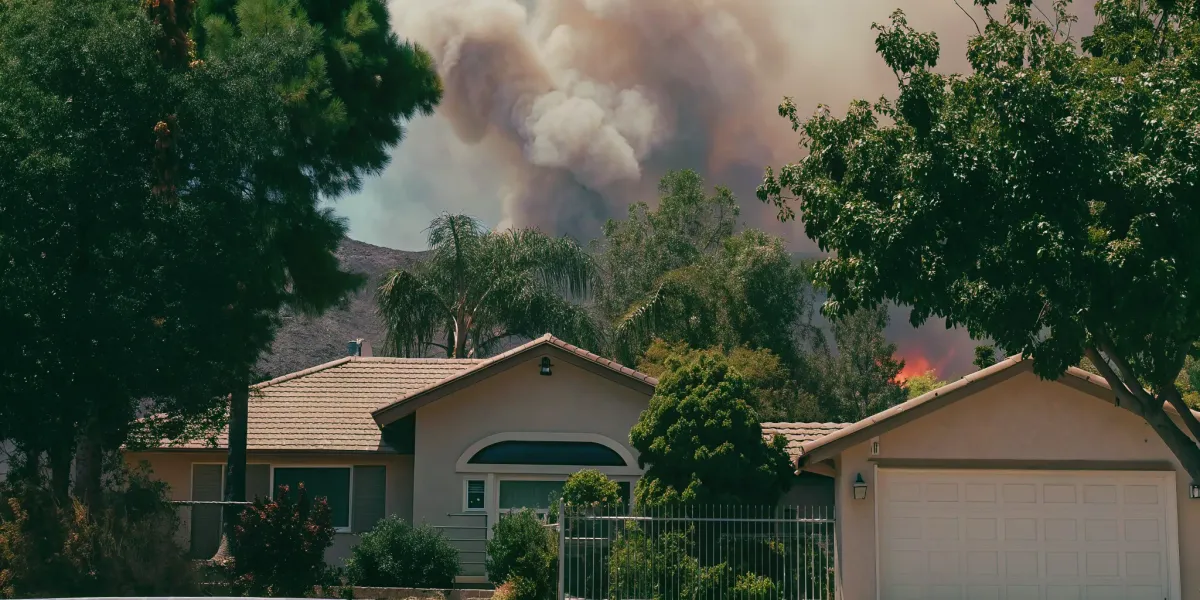
Your home is likely your biggest financial asset, but its protection is now threatened by more than just flames. The insurance crisis in California means that the policy you rely on to safeguard your investment may have significant gaps. Many homeowners don't realize they are underinsured until they file a claim and discover their coverage won't be enough to rebuild their lives. The difference between your policy limit and the actual cost to rebuild can be hundreds of thousands of dollars. To protect your finances, you must understand the specifics. Asking what does wildfire insurance cover is the first step in a crucial financial audit. This guide will explain common coverage caps, high-dollar deductibles, and frequent exclusions so you can identify and close any gaps in your protection.
Key Takeaways
- Verify Your Coverage Annually to Avoid Financial Shock: Your policy's limits must cover the full, current cost to rebuild your home—not its market value. Confirm your specific wildfire deductible and create a detailed home inventory to ensure you have enough protection to truly recover after a loss.
- Proactive Mitigation is Key to Insurability: Taking concrete steps like hardening your home and creating defensible space is no longer just about safety; it's often a requirement for getting or keeping insurance. Meticulously document your work to prove your home is a lower risk to potential insurers.
- Know Your Insurance Options When Private Carriers Pull Back: If you're denied traditional coverage, your next step is the California FAIR Plan for basic fire protection. To achieve comprehensive coverage, you'll need to pair it with a separate "Difference in Conditions" policy that covers other risks like liability and theft.
Does Your Homeowners Insurance Cover Wildfires?
The short answer is yes, a standard homeowners insurance policy typically covers damage from wildfires. But in high-risk states like California, that answer has become dangerously complicated. As insurers pull back from fire-prone areas, homeowners are left confused about what their policy actually protects, what it excludes, and whether they can even get coverage at all. This uncertainty is a huge source of stress, leaving many feeling powerless against both the threat of fire and the instability of the insurance market.
Understanding your policy is the first step toward taking back control and protecting your family’s finances. The reality is that coverage can vary dramatically depending on where you live and who your insurer is. Simply assuming you’re covered isn’t enough anymore. You need to know the specifics of your policy—from deductibles to coverage limits—to ensure you aren’t left financially vulnerable after a fire. This section will walk you through what a standard policy covers, how to find the right coverage, and how the rules change when you live in a high-risk zone.
What a Standard Policy Typically Covers
In most cases, fire is a "covered peril" in a standard homeowners insurance policy. This means that if a wildfire damages or destroys your property, your insurance is designed to help you recover. This coverage isn't just for the flames themselves; it also includes damage from smoke, which can be extensive.
Generally, a policy will cover three main areas. First is the structure of your house itself. Second are other structures on your property, like a detached garage, a workshop, or a shed. Finally, it covers your personal belongings—everything from your furniture and clothes to your electronics. This forms the baseline of protection that most homeowners expect from their insurance for wildfires.
Finding Wildfire-Specific Coverage
Here’s a common point of confusion: you can’t go out and buy a separate “wildfire insurance” policy. Wildfire coverage is almost always included as part of your comprehensive homeowners insurance plan. The challenge isn’t finding a special type of insurance, but rather making sure your existing homeowners policy provides enough coverage to fully rebuild your life after a total loss.
This means you need to look closely at your policy’s limits. Is the coverage amount for your home high enough to cover today’s construction costs? Have you accounted for all your personal property? The goal is to confirm your policy is robust enough to handle a worst-case scenario, not to find a standalone product that doesn't exist.
How Coverage Changes in High-Risk Zones
If you live in an area frequently threatened by wildfires, the standard rules often don't apply. The insurance landscape in California has shifted dramatically, with many private insurers no longer willing to take on the risk. As a result, homeowners in high-risk zones face a new set of challenges.
Insurers are managing their risk in several ways. Many are refusing to offer new policies or are non-renewing existing ones, leaving homeowners scrambling for options. For those who can get coverage, insurers might impose a separate and much higher deductible specifically for wildfire damage. This means your out-of-pocket cost after a fire could be tens of thousands of dollars more than you expect. These changes make it incredibly difficult to predict your financial exposure and highlight the urgent need to understand every detail of your policy.
A Breakdown of Wildfire Coverage
When you’re staring at a homeowners insurance policy, it can feel like reading a different language. But understanding what’s actually protected is the first step toward feeling secure. A standard homeowners policy is designed to cover fire damage, and that includes wildfires. Let’s break down the key areas of coverage so you know exactly what to look for in your own policy.
Your House and Other Structures
This is the core of your homeowners insurance. It covers the cost to repair or rebuild your home if it’s damaged or destroyed by a wildfire. This protection isn’t just for the main house; it also extends to other structures on your property, like a detached garage, shed, or fence. It’s critical to ensure your coverage limit reflects the current cost of labor and materials to fully rebuild, not just your home's market value.
Your Personal Belongings
Your home is more than just walls and a roof; it’s filled with your personal possessions. Homeowners and renters insurance policies cover the loss of these items if they are damaged or destroyed in a wildfire. This includes everything from furniture and electronics to clothing. To make a potential claim smoother, it’s essential to create a detailed home inventory with photos or videos, which can make a huge difference during a stressful claims process.
Temporary Living Expenses (ALE)
If a mandatory evacuation is ordered or if a wildfire makes your home unlivable, where do you go? This is where Additional Living Expenses (ALE) coverage comes in. This part of your policy helps pay for the extra costs you incur while you’re displaced, such as hotel bills, rent for a temporary apartment, and even meals. ALE is a critical safety net that allows your family to maintain some normalcy while your home is being repaired.
Landscaping and Outdoor Items
Coverage for your yard can be tricky and varies significantly between policies. Some standard policies offer limited coverage for trees, shrubs, and plants damaged by fire, often capping the payout at a small percentage of your total dwelling coverage. However, many policies explicitly exclude landscaping. Don’t assume your outdoor items are covered—read the fine print of your policy or speak directly with your agent to understand what is and isn’t protected.
Damage from Smoke and Heat
A wildfire’s impact isn’t limited to the areas touched by flames. Intense heat can warp siding and damage windows, while pervasive smoke can cause extensive damage to your home’s interior. Fortunately, a standard homeowners policy typically covers damage from both smoke and heat. This includes the cost of professional cleaning services to remove soot and odor, as well as repairs for any heat-related structural damage.
What Your Wildfire Policy Doesn't Cover
Having a homeowners insurance policy is a critical first step, but it’s not a guarantee of full protection after a wildfire. The fine print in your policy—the exclusions, deductibles, and coverage limits—determines how much financial help you’ll actually receive. Many homeowners are caught off guard by these details during the worst possible time. Understanding what your policy doesn’t cover is just as important as knowing what it does. It allows you to identify gaps in your coverage and take steps to protect your finances before a disaster strikes.
This is especially true in California, where the insurance landscape is becoming more complex. As insurers adjust to rising wildfire risk, policies are changing, and homeowners are being left with more financial responsibility. Let’s break down the common limitations you need to be aware of.
Common Policy Limits and Exclusions
You might be surprised by what isn’t covered in a standard homeowners policy. While the structure of your home is the main focus, other parts of your property often have limited or no coverage. For example, damage to your landscaping, including trees, shrubs, and gardens, is frequently excluded or capped at a very low amount. The same often applies to fences, retaining walls, and detached sheds or workshops unless you’ve purchased specific, additional coverage for them. Always read your policy’s declaration page carefully to see exactly which structures and property features are included and which are left out.
How Deductibles Work
A deductible is the amount of money you must pay out-of-pocket for a loss before your insurance company starts to pay. For years, most homeowners had a simple, flat-dollar deductible, like $1,000 or $2,500. However, in high-risk areas, insurers are shifting to percentage-based deductibles for wildfire damage. These are calculated as a percentage of your home’s total insured value, often between 2% and 5%. For a home insured for $800,000, a 5% deductible means you would be responsible for the first $40,000 of damages. This shift can leave homeowners with a sudden and massive unexpected expense.
Understanding Your Coverage Caps
Your policy also has limits, or “caps,” on how much it will pay out for certain types of losses. Your personal belongings—like furniture, clothing, and electronics—are a key example. Payments for these lost items are typically capped at a percentage of your home's insured value, usually between 50% and 70%. If your home is insured for $800,000, your personal property coverage might max out at $400,000. While that sounds like a lot, the cost of replacing every single item you own adds up quickly. High-value items like jewelry, art, and firearms almost always have much lower sub-limits and require a separate rider for adequate coverage.
Special Rules for High-Risk Areas
If you live in a wildfire-prone area of California, you’re facing a rapidly changing insurance market. Because of the escalating risk, many major insurance companies like State Farm and Allstate are refusing to offer new policies in certain ZIP codes, non-renewing existing customers, or significantly reducing the coverage they offer. This pullback has pushed hundreds of thousands of homeowners into a difficult position, forcing them to seek out more expensive, less comprehensive coverage. It’s a direct response to the immense losses insurers have faced and makes it more important than ever for homeowners to be proactive about reducing their property’s risk.
The Dangers of Going Uninsured
The combination of non-renewals and soaring premiums is forcing some homeowners to consider going without insurance, especially if they’ve paid off their mortgage. This is a financially devastating gamble. Rebuilding a home and replacing everything in it can cost hundreds of thousands, if not millions, of dollars. The insurance industry in California is facing what some attorneys call a "serious crisis," which can make the claims process difficult even for those with a policy. Without any coverage, you are left entirely on your own, threatening not only your financial future but also the recovery of your entire community.
Where to Find Insurance in High-Risk Areas
Finding homeowners insurance in a high-risk fire zone can feel like an impossible task. As traditional insurance companies pull back from these areas, many homeowners are left scrambling for options. The good news is that coverage is still available, but you need to know where to look and what to expect. Understanding your choices is the first step toward securing the protection you need for your home and family.
Traditional Private Insurers
First, it's important to know that you can't buy a standalone "wildfire insurance" policy. Wildfire protection is a standard part of most homeowners insurance policies. However, due to the rising risk in California, many major insurers like State Farm and Allstate have stopped offering new policies in certain areas. If you are able to find a private insurer, expect to pay significantly more. You should also pay close attention to the deductible for wildfire damage. Many policies now use a percentage-based deductible (often 2-5% of your home's value), which could leave you paying tens of thousands of dollars out of pocket before your coverage kicks in.
The California FAIR Plan Explained
If you’ve been denied coverage by private insurers, your next stop is likely the California FAIR Plan. This is a state-backed program designed to be an insurer of last resort. It provides basic fire insurance when no one else will. While it’s a critical safety net, it’s not a complete solution. The FAIR Plan only covers damage from fire, lightning, and internal explosion. It does not cover liability, theft, or water damage. Coverage is also capped at $3 million for the structure and contents combined, which may not be enough for everyone. Think of it as a foundational piece of your insurance puzzle, not the whole picture.
Adding Supplemental Coverage
Because the FAIR Plan is so limited, you will need to purchase additional policies to get the same level of protection as a standard homeowners plan. You can pair a FAIR Plan policy with what’s called a “Difference in Conditions” (DIC) policy from a private insurer. A DIC policy fills in the gaps by covering things like liability, theft, and other risks. If you have a standard policy, you might also consider adding an "extended replacement cost" endorsement. This provides an extra cushion—typically 20-50% above your policy limit—to help cover the surge in labor and material costs that often happens after a widespread disaster.
Meeting Your Mortgage Requirements
If you have a mortgage, your lender requires you to maintain homeowners insurance. The FAIR Plan, combined with a DIC policy, will typically satisfy this requirement. But meeting your lender’s minimum isn’t enough; you need to ensure you have enough coverage to protect your own financial future. This means having enough insurance to completely rebuild your home and replace your belongings. A detailed home inventory is an essential tool for determining how much personal property coverage you truly need. Without adequate protection, you could lose your home and still be responsible for the mortgage.
How to Ensure You Have the Right Coverage
Having a homeowners insurance policy is the first step, but it’s not the last. In the aftermath of a wildfire, the difference between a smooth recovery and a financial nightmare often comes down to the details of your coverage. Many homeowners discover too late that they are underinsured, meaning their policy limits are too low to cover the actual cost of rebuilding their home and replacing everything in it. This can happen for many reasons—rising construction costs, home improvements that weren't added to the policy, or simply an outdated assessment of the property's value.
Taking the time to understand and verify your coverage is one of the most powerful actions you can take to protect your family’s financial future. It’s about moving from a place of uncertainty to one of confidence, knowing your safety net is strong enough to hold you. Don’t assume your insurance agent or company has it right; it’s your responsibility to ensure the numbers align with your reality. By proactively managing your policy, you can confirm you have the resources to rebuild your life if the worst happens. The following steps will walk you through exactly how to check your coverage and make sure it’s right for you.
Calculate Your Home's Full Replacement Cost
The single most important number in your policy is the replacement cost value (RCV) for your home. This is the estimated cost to rebuild your house from the ground up, using similar materials and quality, at today’s prices. It is not the same as your home’s market value or its tax assessment. Make sure your policy covers the full cost to rebuild your home and other structures. To get an accurate figure, talk to a local contractor who understands current labor and material costs in your area, which often spike after a major disaster. Your insurance company may offer a calculation tool, but it’s wise to do your own research to ensure their estimate is realistic for your specific home and location.
Create a Home Inventory
If you had to list every single item in your home from memory, could you do it? Probably not. That’s why a home inventory is so critical. It's a good idea to keep an updated list of everything you own to streamline the claims process for your personal belongings. The easiest way to do this is to walk through your home with your smartphone, recording a video of everything. Open drawers and closets. For big-ticket items like electronics or furniture, take photos of serial numbers and receipts. You can use an app or a simple spreadsheet, but be sure to store your home inventory in the cloud or on a drive you keep somewhere safe outside your home.
Estimate Your Additional Living Expenses
Additional Living Expenses (ALE) coverage is a lifeline when you can’t live in your home. If a wildfire makes your home unlivable, your homeowners or renters insurance will pay for extra living expenses, like a hotel room or meals out. But this coverage has limits. Check your policy to see how much you’re entitled to—it might be a total dollar amount or be limited to a certain number of months. Consider how long it might realistically take to rebuild in your area after a widespread disaster and ask yourself if your current ALE limit is enough to support your family during that time. If not, talk to your agent about increasing it.
Review Your Policy Annually
Your insurance needs are not static. You should check the value of your home and its contents every year to decide if your current insurance is enough. Did you complete a major renovation, like a new kitchen or bathroom? Did you buy new furniture or expensive electronics? Have local construction costs gone up due to inflation? All of these factors can increase your rebuilding costs and leave you underinsured if your policy isn’t updated. Make it a yearly habit to review your coverage with your agent, just as you would review your Wildfire Action Plan to ensure your family and property remain protected.
Protect Your Home and Lower Your Insurance Costs
Taking proactive steps to reduce your home’s wildfire risk is one of the most powerful things you can do. It not only makes your property safer but also makes you a more attractive applicant to insurance carriers. In a market where insurers are pulling back, demonstrating that you’ve actively mitigated your risk can be the deciding factor in getting or keeping your coverage. These actions show insurers that you are a partner in protecting your property, not just a liability on their books. It’s about shifting from a passive homeowner to an active defender of your space. This mindset change is critical when navigating the current insurance landscape. Insurers want to see that you've invested in lowering your risk profile before they invest in covering you. By hardening your home and creating defensible space, you are investing in your home’s future and your own peace of mind. California now requires insurers to offer discounts for wildfire mitigation efforts, but the real prize isn’t just a small premium reduction—it’s long-term insurability. A comprehensive wildfire action plan can help you organize your efforts, track these improvements, and present a clear, compelling case to your insurer that your home is a lower risk. It turns your hard work into a tangible asset during insurance negotiations.
Key Home Hardening Actions
Home hardening involves using construction materials and installation techniques that increase your home’s resistance to heat, embers, and flames. Embers are the primary threat, as they can travel far ahead of a wildfire and ignite vulnerable spots on a house. Your goal is to create a shell that can withstand this assault. Start with the most vulnerable areas. Your roof is the most critical component, so a Class A fire-rated material like asphalt shingles, metal, or tile is essential. Next, focus on vents. Cover all attic, crawlspace, and eave vents with 1/8-inch metal mesh to block embers from entering. Finally, consider multi-pane tempered glass windows, which are more resistant to breaking from radiant heat. Each step makes your home a tougher target for wildfire.
Create Your Defensible Space
Defensible space is the buffer you create between your home and the surrounding grass, trees, and wildland. This space is essential for two reasons: it slows the spread of wildfire and gives firefighters a safe area to defend your home. California law requires homeowners in high-risk areas to maintain defensible space, which is typically divided into two zones. The first zone, extending 30 feet from your home, requires the most attention. Remove all dead plants, weeds, and dry leaves. Keep tree branches trimmed at least 10 feet from other trees and your roof. The second zone, extending out to 100 feet, focuses on reducing fuel. Thin out dense vegetation and remove lower tree branches to prevent a ground fire from climbing into the tree canopy.
Document Your Mitigation Work
Completing wildfire mitigation work is a major accomplishment, but if you don't document it, your insurer may never know it happened. Proof is critical when you’re trying to secure coverage or qualify for discounts. Before you begin any work, take clear "before" photos of the areas you plan to improve. As you complete projects, take "after" photos from the same angles. Create a dedicated folder—digital or physical—to store everything. Keep all receipts for materials, invoices from contractors, and any permits you obtained. This documentation creates a professional and credible record of your efforts. When you apply for insurance or your policy is up for renewal, you can present this portfolio to the agent or underwriter as concrete evidence of your reduced risk.
How to Qualify for Insurance Discounts
In California, insurers are now required to offer discounts to homeowners who take recognized steps to harden their homes and create defensible space. The state’s Safer from Wildfires framework outlines specific actions that qualify for these discounts, such as maintaining defensible space and installing a Class A roof. To get these discounts, you must inform your insurance company of the mitigation measures you’ve taken and provide the documentation you’ve collected. Be proactive—don’t wait for them to ask. While some initial discounts may seem small, they represent a significant shift in the insurance industry. More importantly, these actions are becoming the standard for maintaining coverage in high-risk areas. By meeting these standards, you position yourself as a responsible homeowner and a lower-risk client.
How to File a Wildfire Insurance Claim
Facing the aftermath of a wildfire is overwhelming. The last thing you want to deal with is a complicated insurance claim, but it’s a critical step toward recovery. The process can be long and demanding, but being organized and persistent will make a significant difference. Think of it as a project with a clear goal: getting the resources you need to rebuild. This guide breaks down the process into manageable steps to help you move forward with confidence.
First Steps to Take After a Fire
Once you are in a safe location and local officials have given the all-clear, your first call should be to your insurance company to start the claims process. The sooner you report the loss, the sooner they can assign an adjuster to your case. Be prepared to provide your policy number and a description of the damage.
Immediately begin documenting everything. Use your phone to take extensive photos and videos of the damage to your home, other structures, and your property from every possible angle. Don't move or throw anything away until you’ve documented it, unless it poses a safety hazard. Keep a detailed log of every conversation with your insurer, noting the date, time, and the name of the person you spoke with. This initial record of the damage is crucial evidence for your claim.
How to Work with Your Claims Adjuster
Your insurance company will assign a claims adjuster to inspect the damage and estimate the cost of repairs. It’s their job to assess the loss on behalf of the insurer, but remember that you are your own best advocate. Provide your adjuster with all the documentation you’ve gathered. You will likely need to complete a "proof of loss" form, which is a formal statement detailing the property and belongings that were damaged or destroyed.
Be thorough and honest. If you disagree with the adjuster’s assessment, you have the right to challenge it. You can get independent estimates from contractors or even hire a public adjuster to represent your interests. If your claim is unfairly delayed or denied, organizations like United Policyholders can offer guidance, and you may need to consult with an attorney to understand your options.
Gather the Necessary Documents
The strength of your claim depends on your documentation. This is where having a pre-disaster home inventory becomes invaluable. If you don’t have one, you’ll need to recreate a list of your belongings from memory, which can be difficult and emotionally taxing. Use photos, receipts, and bank statements to help jog your memory.
You also need to track all your expenses after the fire. If your policy includes Additional Living Expenses (ALE), it will cover costs like hotel stays, meals, and rent for temporary housing. Keep every single receipt. A simple folder or digital file can help you stay organized. Having a comprehensive Wildfire Action Plan ahead of time, complete with a documented inventory, can make this part of the process significantly less stressful.
What to Expect During the Claims Process
Filing an insurance claim is rarely a quick process, especially after a large-scale disaster when insurers are handling thousands of claims at once. Be prepared for delays, but don’t be afraid to follow up regularly with your adjuster for updates.
Pay close attention to deadlines. Your policy will specify a time limit for filing your claim and submitting your proof of loss forms. Missing these deadlines could jeopardize your ability to receive a settlement. If you receive a settlement offer, review it carefully to ensure it covers the full scope of your losses according to your policy. You don’t have to accept the first offer, especially if it feels too low. The claims journey is a marathon, not a sprint, and staying organized is your key to navigating it successfully.
Related Articles
- How to Get CA Home Insurance in High Fire Risk Areas
- Is Your Wildfire Insurance Coverage Enough?
- Wildfire Season: Why It's Now a Year-Round Threat
Frequently Asked Questions
What should I do if my insurance company drops my policy? Receiving a non-renewal notice is stressful, but you have options. Your first step should be to explore the California FAIR Plan, which is a state-backed program that provides basic fire insurance to homeowners who can't get coverage elsewhere. It’s designed to be an insurer of last resort. While it provides a critical safety net, it's important to understand that its coverage is limited, so you will likely need to purchase a supplemental policy to protect against things like theft and liability.
Why is my wildfire deductible so high? Insurers in high-risk areas are shifting how they manage their financial exposure to wildfires. Instead of a flat deductible like $2,500, many are now using percentage-based deductibles for fire damage, often ranging from 2% to 5% of your home's insured value. For a home insured at $800,000, a 5% deductible means you would be responsible for the first $40,000 in damages. This change transfers more of the initial financial risk to the homeowner.
How can I be sure I have enough coverage to completely rebuild my home? The most important step is to understand your home's replacement cost, which is the price to rebuild it from scratch at today's labor and material costs. This number is often very different from your home's market value. To get an accurate estimate, consult a local contractor. You should also conduct a thorough home inventory to ensure your personal property coverage is sufficient. Review your policy limits annually to account for renovations and inflation.
Will hardening my home actually help me get or keep my insurance? Yes, absolutely. Taking steps to harden your home and create defensible space makes your property a lower risk in the eyes of an insurer. In a competitive market, this can be the deciding factor in whether a company offers you a policy or renews your existing one. While California now requires insurers to offer discounts for these actions, the real benefit is demonstrating that you are a proactive partner in protecting your property, which makes you a much more attractive client.
What is the California FAIR Plan, and is it enough? The California FAIR Plan is a foundational policy that covers damage from fire, lightning, and internal explosions. By itself, it is not enough to equal the protection of a standard homeowners policy. It does not cover common risks like liability, theft, or water damage. To get comprehensive protection, you must pair your FAIR Plan policy with a separate "Difference in Conditions" (DIC) policy from a private insurer, which is designed to fill those coverage gaps.
